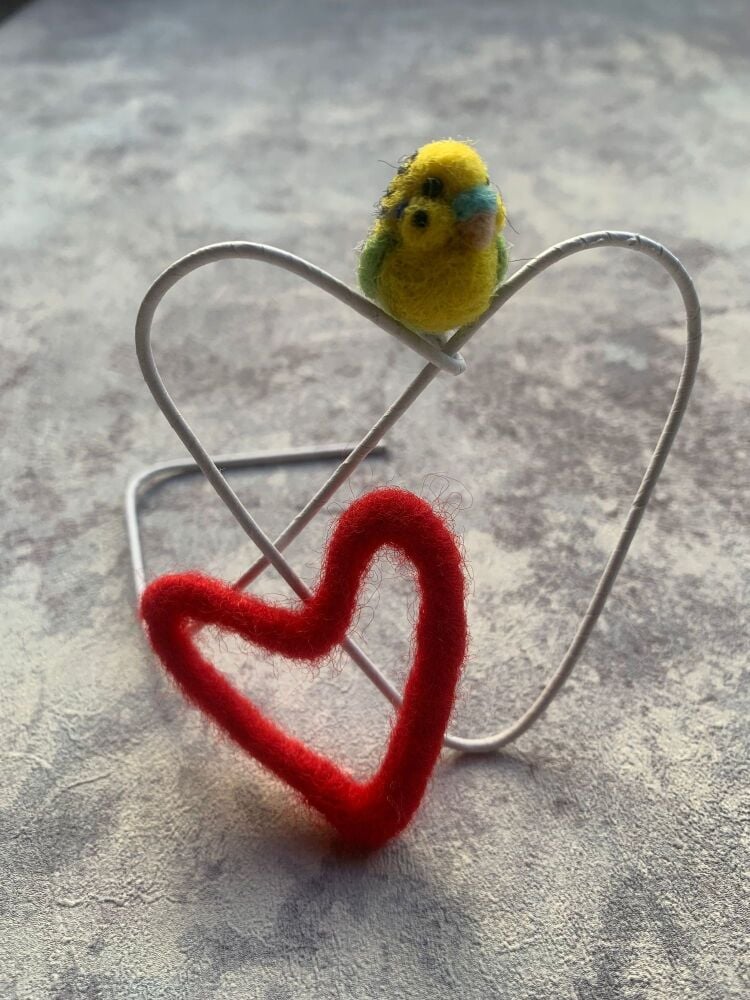Transforming Wet Felting with Texture and Interest
Posted on
Step-by-Step Guide to Adding Texture in Wet Felting

1. Choose your fibres
- curly wool locks for raised, organic textures
- yarns or threads to create ridges and lines
- silk or plant fibres for shiny, crinkled surfaces
2. Layer strategically
- place textured fibres on top of your base wool batt or roving
- add thin wisps of contrasting fibres to highlight raised areas
- experiment with uneven layering to create natural depth
3. Use resists
- insert plastic or foam shapes between layers to form bumps, ridges, or pockets
- remove the resist after felting to reveal sculptural textures
4. Manipulate during fulling
- roll tightly in one direction for ridges
- scrunch or pinch areas while fulling to create puckers
- use a washboard or ribbed surface to press in patterns
5. Combine techniques
- mix curly locks with resist shapes for dramatic 3D effects
- pair silk fibres with scrunching for crinkled, shiny highlights
Tips & Considerations
- shrinkage control: Textures exaggerate as wool shrinks; plan your size accordingly
- durability: Secure locks and yarns well during felting so they don’t pull out later
- experimentation: Small sample swatches are the best way to test fibre combinations before committing to a large piece
Mini tutorial to put these skills into practise, making a small round vessel
Step 1: Prepare the Resist
- Cut a small circle of plastic to act as your resist.
- This will form the hollow vessel and allow you to build raised textures around it.
Step 2: Lay the Base Layers
- Place the resist on bubble wrap.
- Cover one side with two thin layers of wool, overlapping edges.
- Flip and repeat on the other side.
- Smooth edges so wool wraps around the resist.
Step 3: Add Texture Fibres
- Curly locks: Place them on the surface in clusters for raised, organic bumps.
- Silk hankies: Stretch thinly and scrunch them slightly before laying down — they’ll crinkle beautifully.
- Yarn scraps: Arrange in spirals or lines for ridges.
Step 4: Wet and Felt
- Cover with netting, sprinkle warm soapy water, and press gently.
- Rub in circles until fibres start binding.
- Flip and repeat on the other side.
Step 5: Fulling for Texture
- Roll the piece in bubble wrap 30–40 times, then rotate and repeat.
- Remove the resist once fibres are holding together.
- Shape the vessel by pinching and scrunching textured areas to exaggerate bumps.
- Roll tightly in one direction to form ridges.
Step 6: Rinse and Shape
- Rinse in hot then cold water to shock fibres.
- Shape the vessel with your hands, pulling edges outward and pressing textures inward.
- Let dry over a bowl or balloon to keep form.
Result
You’ll have a small vessel with raised curly locks, crinkled silk patches, and ridged yarn lines — a tactile, sculptural piece that shows off multiple texturing methods in one project.




